In the century-long history of the “assault rifle” as a concept, there are two that stand out – the AK 47 and the AR 15. While the two rifles were developed at the same time and had the same general concept behind them, their design philosophies and tactical implementations, at least originally, could not be more different. In this piece, we’ll go through the histories of both the AK 47 and the AR 15, before breaking down each rifle in terms of their similarities and differences in several categories.
While both rifles have their fans, we ultimately come to conclude here that, when it comes to an assault rifle, either of these platforms can perform fantastically well in trained hands.
History of the AK 47

The AK 47, or Avtomat Kalashnikova Model 1947, came from lessons learned by the Soviet Union at the height of World War II. Early on in the conflict, the Soviets learned that in tight urban warfare, rapid fire did a lot more to turn the tide of battle than stopping power.
During the war, the Soviet Union made use of their submachine guns, for example, the PPSh41 to great effect, but these full-auto bullet hoses did not work at long range as well as a rifle, such as their then-issued Mosin-Nagant.

In 1938 right around the start of WWII, the Germans developed the STG44 – the first assault rifle fielded by a modern army. Keeping those tactical insights in mind, the Soviets in 1947 awarded the AK 47 with its official distinction, kicking off a line of products that has resulted in millions of rifles used all around the globe for several decades.
The base models of the AK 47 had milled receivers, relatively tighter tolerances when compared to later examples, and were extremely reliable, as is the case with all currently-produced models, though the new models are considerably cheaper to produce. The original AK 47 introduced the long-stroke gas piston system that is still in use.
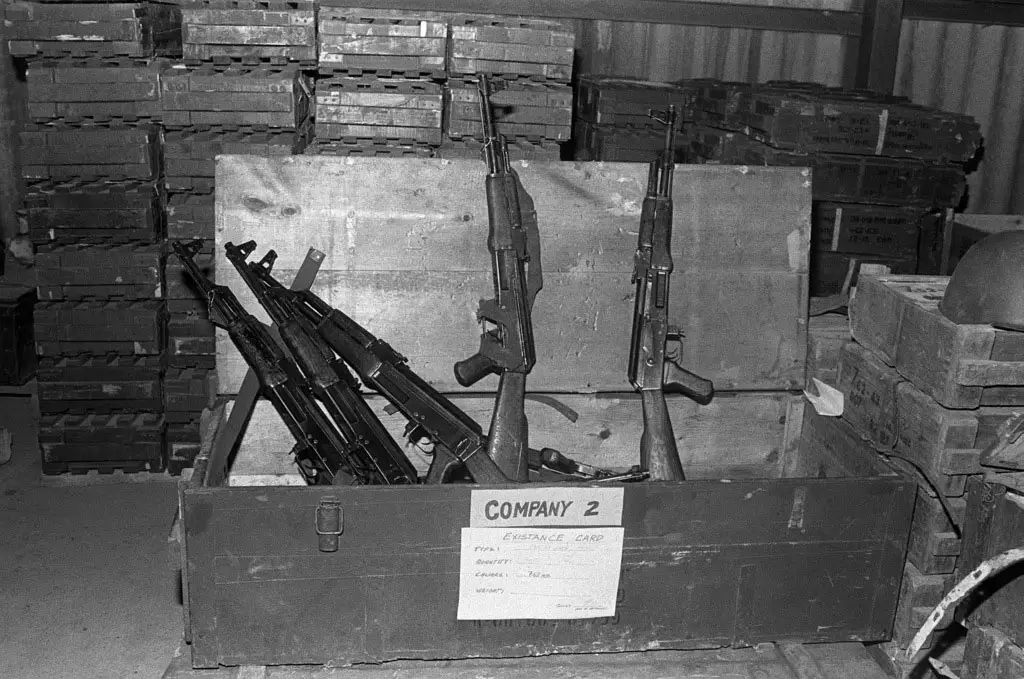
History of AR 15

The AR 15 (“Armalite Rifle”) began its life as the AR 10, a similar rifle also designed by Eugene Stoner. It was built in response to the US Army’s call for a new rifle in the wake of World War II.
Eugene Stoner, answering the Army’s call for a new rifle to meet NATO standards, came up with the AR10, a full auto capable assault rifle in 7.62mm NATO. Sadly, the Army decided to no longer favor stopping power as it had in the past, which sent Stoner and his rifle back to the drawing board to create a smaller variant.
By 1960, the same rifle was back, slightly modified, in the smaller 5.56mm NATO cartridge and called the AR-15: this smaller round was still capable of making accurate hits, and the direct gas impingement system makes it not only extremely accurate but exceptionally reliable as well.
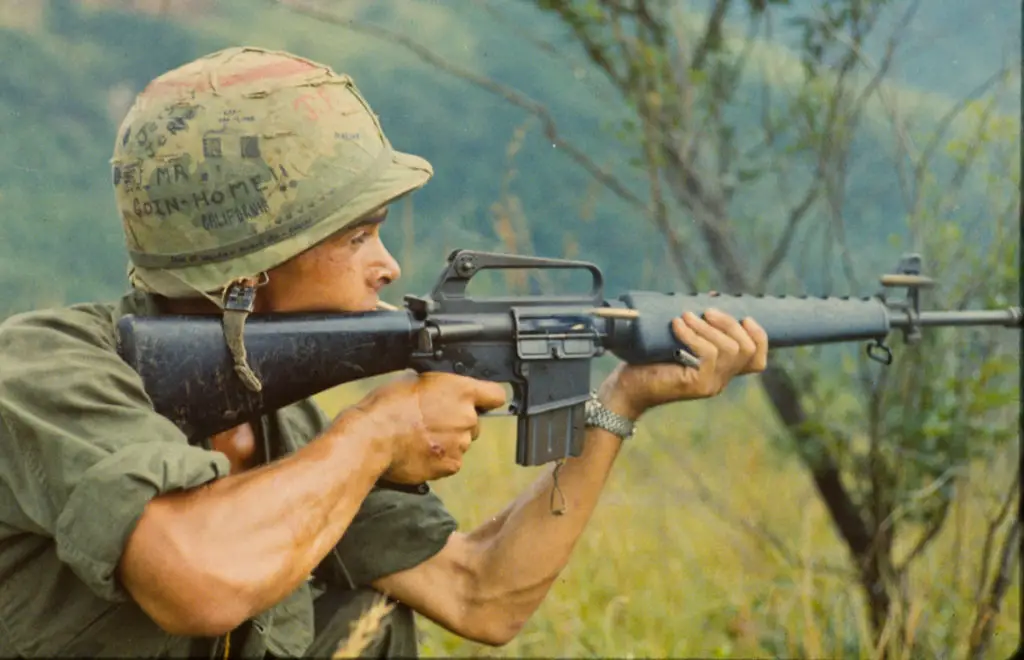
The AR-15 was actually the precursor to the U.S. Military’s M16, which was used heavily during the Vietnam war and is still used widely around the world by many modern militaries. Though today, the US generally prefers to use the M4, which is a smaller and lighter evolution of the same rifle.
Differences between the AR15 vs AK47
| AK47 | AR15 | |
| Designed | 1946 | 1956 |
| Origin | Soviet Union | United States |
| Action | Gas-operated, rotating bolt | Gas-operated, rotating bolt |
| Weight | 7.7 lbs | 6.5 lbs |
| Ammo | 7.62mm | 5.56mm / .223 |
| Price Today | $750+ | $500+ |
| Effective Range | 380 yards | 600 yards |
Weight
The AR-15 is generally lighter than the AK-47
Generally, the AK 47 weighs somewhere in the neighborhood of 7.7 lbs. To be clear, that weight comes from the original rifle, a milled model made in 1948, with fixed wooden furniture and a 16.3-inch barrel. In different configurations, you’ll have different lengths of long-stroke piston, barrel, different stock materials and the like that can change things quite a bit: it’s possible to have an AK as light as six pounds, or as heavy as over ten pounds. In general terms, even with an empty magazine the AK 47 assault rifle is a little bit heavier than a comparable AR 15.

The Original AR15, close to that issued during the Vietnam War, weighed 6.5 lbs unloaded. That gives it over a pound advantage over the AK: this is especially impressive when you also consider the fact that the M16A1 has a longer barrel than the AK 47. This has a lot to do with Stoner’s use of polymers in the design of the AR platform, which was intended to decrease recoil. On its face, the AR 15 is the clear winner here, but there is one caveat to be made here.
Whichever rifle you pick, the accessories matter a lot: it’s entirely possible to squander the AR’s weight advantage by adding a metal Picatinny rail, an optic, a laser, and a foregrip. With that said, we still give the nod to America’s Rifle here thanks to its lower starting weight and tons of customizable features.
Home Defense Use
The AR-15 edges out the AK-47 here despite several drawbacks such as its iron sights.
To be clear, both of these rifles are a lot better than general-purpose hunting rifles for defensive purposes, and we’d happily either have an AR 15 or an AK 47 when it comes to home defense, but there are some pros and cons to each of these rifles.
The first thing to think about in a self-defense rifle is the iron sights. The iron sights on the AR 15 are clearly meant to be used to increase the maximum effective range, with the smaller aperture of the standard M16A2 style sights giving an excellent sight picture out to about 300 yards. The AK 47, on the other hand, might have less precise sights, but the open sight picture makes it a lot easier to use iron sights on an AK 47 in close quarters. Here, the AK gets a slight edge, but we’d put a red dot optic on any rifle we’d use inside of a house.
The next thing we think about is caliber: even hardcore AR fans recognize that 5.56mm NATO ball ammunition has a tendency to over-penetrate, giving a slight ding against the AR 15 in close quarters. With that said, some hollow point rounds are an easy solution here. The 7.62 round that the AK47 fires is slower and penetrates less, but kicks more. With some hollow-point rounds, the minimal recoil offered by the 5.56mm cartridge gives the AR 15 an advantage in close quarters.

Finally, weapon handling matters a lot here. For the purposes of the civilian market, we’re assuming that we’re talking about a semi-automatic rifle here. The AR 15-has a clear edge in the ergonomics department: the safety selector is right by your firing hand’s thumb, and the bolt catch is by your index finger. This might be a little more difficult for left-handed people, but here we think that a semi-automatic AR 15 is about the easiest to handle rifle in the world.
Overall, our pick for a defensive gun, as evidenced by our writer having one prepped and ready to go in a non-disclosed location, is the AR 15.
Ammo / Cartridge (Price & Availability)
Toss up – good luck finding cheap ammo for either rifle.
The AR15, as it was originally designed, fires the 5.56mm NATO cartridge. The good news for us in the US is that’s the cartridge that our military uses, so about every ammo manufacturer that operates in the US makes that cartridge. The bad news is that ammo prices have gone through the roof over the last several years, and it’s still hard to find even steel-cased ammunition for less than 50 cents per round. Additionally, that steel-cased ammunition both makes your gun filthy, and isn’t exactly the most accurate for target shooting, so expect to pay about $0.75 a round or more for good ammo to get accurate shots at the maximum effective range of the rifle.
There’s also an important caveat here: if you look at your rifle and it says .223 Remington rather than 5.56mm NATO, do not fire the NATO standard ammunition through it: the latter has higher pressures that can cause premature damage and wear to ARs made to lower pressure tolerances.

Things are slightly more complicated in the AK world. The AK 47 is chambered in 7.62x39mm: this ammunition was (at least until a certain ground war in Europe ate up all of the international supply) reasonably common, though it had been creeping up in price. Even surplus ammunition that’s old enough to be your father was going for 50 cents per round. Nowadays, please let us know if you can find good 7.62 ammunition at all, let alone at affordable prices. Once things calm down internationally, however, we expect prices to normalize a bit, and we hope to see a lot of overproduction and thus surplus ammo for the AK 47 to come into the US market in the coming months and years.
Both the 5.56mm and the 7.62mm are popular calibers, however, and manufacturers mass-produce both of them in the US.
There’s also the Ak74 to think about, which was the modernized version chambered in a 5.45mm cartridge: the ammo is relatively new to the US market, and the price shows it: a dollar per round for the cheap stuff is not uncommon at least in most of the US. We don’t necessarily expect the price of 5.45 to go down, either: recent international events have certainly reduced the chances for imports of Russian AK74 variants, and not many companies in the US make or have plans to make, rifles of this caliber.
In thinking about ammunition pricing and availability, then, the clear winner here is the ammo manufacturers. If you’re shooting anything other than .22LR in the year 2022, chances are that you’re paying more for ammunition than you have in recent memory, and shooting a semi-automatic firearm, whether it’s an AK 47 or an AR 15, is a more expensive venture now than it has been in over a decade.
It might well be worth your time as a dedicated shooter to go down the rabbit hole of internet forums to figure out not only ammunition sales but also the arty of reloading so that you can keep shooting at reasonable prices even as ammunition becomes more expensive.
Reliability
The AK-47 is known throughout the world to be extremely reliable in all conditions.
To be fair to both firearms, both of them are exceptionally reliable and were designed specifically to operate in harsh environments and extreme conditions: they have squared off against each other from the jungles of Vietnam to the mountains of Afghanistan, and both can keep running in adverse conditions. There are however some important differences in design thinking and some historical growing pains to keep in mind.
The AK 47 has a reputation for reliability, and Mikhail Kalashnikov was a firm believer, from his time working on other equipment like tractors, that form should follow function in all things. Thus he made the AK 47, with its relatively loose tolerances and easily manipulated bolt to clear malfunctions, to be exceptionally reliable even with little maintenance. The long-stroke gas piston also aids in this, since not a lot of gas or carbon makes its way into the operating components of the designs by Mikhail Kalashnikov. The AK 47, then, is an exceptionally reliable firearm, and we see why it might well be the most popular long gun on the planet.
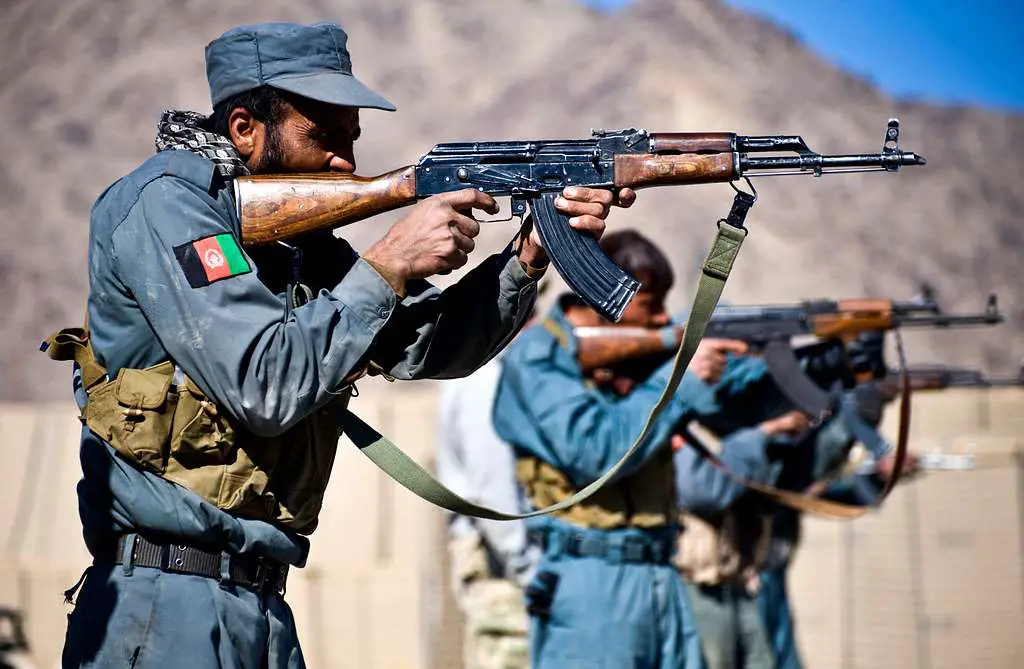
The AR15 got to reliability from the opposite track: the tolerances on the AR 15 are so tight that, once the bolt is closed, it’s about impossible for dirt or mud to ingress into the system, making it exceptionally reliable. But, this also make it harder for any fouling to egress the rifle, meaning that more maintenance is required. This was not told to early troops issued the M16A1 in Vietnam, and thus the AR had an early, poor reputation when compared to the AK.
The biggest difference between the two rifles in this regard is the gas system: the direct impingement system of the AR15 is reliable, but it also feeds filth directly into the operation mechanism of the firearm. In short, we think that the AK might be slightly more reliable when it comes to the average conscript, but for someone who cleans their rifle regularly, the AR15 might well have a slight edge with one caveat: the forward assist.
On many variants of the AR 15, there is a button designed to help you seat a round that does not go into battery with a quick press of a forward assist: we do not recommend this, and it seems like an excellent way to turn a failure to feed into a stuck cartridge. That one factor, the forward assist, is one that we wish would not be included in a modern AR 15.
Ease of Purchasing
The AR-15 is so common in the United States, making it easier to find & purchase than an AK-47.
For the sake of keeping things fair, we’re assuming that you’re trying to buy both an AR 15 and an AK 47 in the same state, which has relatively permissible laws about such things, and you’re over 21. For specifics, please call a local gun shop or a firearms attorney who knows their stuff.
In a place like Florida or Texas, buying a well-made AR 15 couldn’t be much easier: you walk into the gun store, ask to see the model you’re interested in, and fill out Form 4473 to send off to the ATF. In a lot of cases, they can have that form approved over the phone or internet, and you can walk out within minutes. I got my first AR just that way: I had time to walk across the street to the gas station to get a soda before my form 4473 was approved, and then a new, factory-made AR 15 was mine.
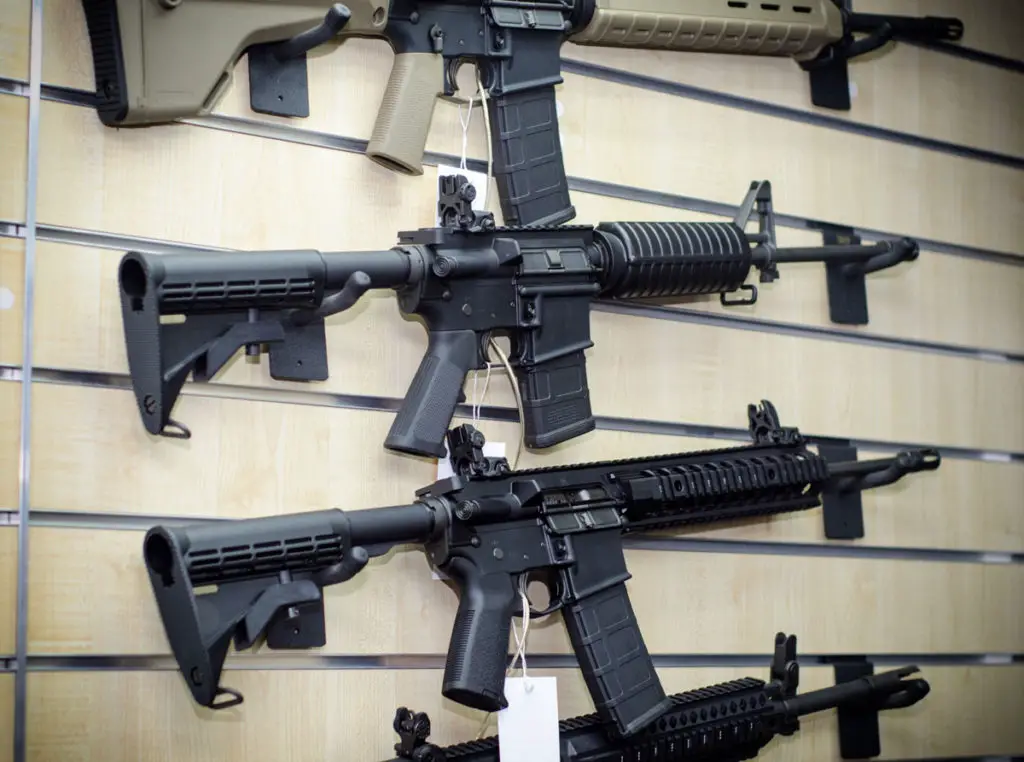
For AKs, the paperwork process is the same, it’s the “new, factory-made” part that gets tricky. A few companies, such as Palmetto State Armory and Kalashnikov Concern, both make new AK 47s in the USA. Those rifles are almost sure to function well out of the box, and if they don’t you have a customer service number to call.
A lot of AKs, on the other hand, were brought in as parts kits for import reasons and were assembled in the US by an importer. Some of these are excellent rifles that will last a lifetime: others are hazardous to your health to so much as attempt to fire the rifle. We advise anyone buying an AK assembled from a parts kit to have it looked at by a qualified gunsmith before you even consider taking it to the range to shoot it.
Price
The AR-15 is manufactured in the U.S. and is readily available, making it generally cheaper than the AK 47.
In terms of purchasing the rifles themselves, things can vary quite a bit, so here we’ll talk about more or less base-model rifles for both the AR-15 and the AK-47.
While prices rose substantially from 2020 until roughly the present, it was possible for some time to get an AR 15 for about $500. These models were basic but functioned well and would certainly do the job in terms of accuracy. A $500 AR made by a reputable company is, in many ways, America’s Rifle as of 2022 – and for good reason.
AK 47 platform rifles tend to be a little more expensive, if for no other reason than there aren’t domestically produced versions that are cheaper, but this is starting to change. In general, expect to pay somewhere in the realm of $750 for a well-made AK 47.
Here in the U.S. then, it’s a fair bit cheaper to get into an AR 15 than it is into an AK 47, so we give the edge to the AR 15 here.
Accuracy
Both rifles are pretty accurate, though the AR15 has less recoil, which might make it easier to shoot effectively.
Both the AK47 and the AR 15 are relatively accurate for modern infantry rifles firing a smaller cartridge than the previous generation of rifles and are intended to engage at relatively shorter distances than those rifles that came before them. To understand the accuracy of these rifles, it’s important to think about the differences in training doctrine.
The United States has a tradition of individual marksmanship that dates back to the American Revolution. This continues today, and we expect our individual soldiers to be able to hit a reasonably small group at up to several hundred yards. To this end, with the right ammo, an AR 15 with a barrel length of about 20″ can certainly accomplish this.

Soviet Doctrine, on the other hand, treated and classified the AK 47, at first, as a submachine gun. As such, they wanted a round with more punch at close range, and have trained their troops not to shoot tight groups, but to hit a man-sized target by sitting in on their belt line. This can be effectively out to several hundred yards as well but depends on mass fire rather than single, aimed shots from individual soldiers.
In trained hands, both rifles are accurate for their intended purposes, but a lot of Americans will appreciate the lower recoil of the AR platform and may shoot better with it.
Effective Range
The AR-15 has an effective range of 600 yards compared to the AK’s 380 yards.
In terms of effective range for infantry rifles, the AR 15 was developed to work well and short to medium range: its small round and low recoil make it an excellent weapon to use at ranges from right in your face out to 300 or so yards, where the effectiveness of the projectile starts to drop a little. However with the right shooter, the Colt AR-15 has an impressive max effective range of around 600 yards.
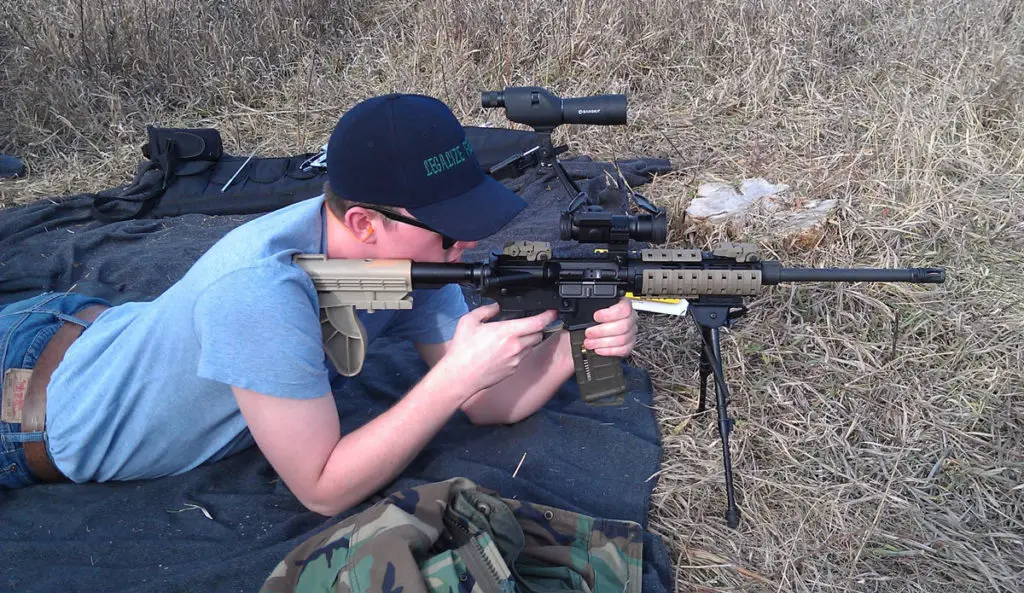
The AK 47 fires a bigger round, and thus has a little more recoil and thus is slightly less accurate at medium ranges. With that said, the AK is more than capable at ranges out to 300 yards, but the weight of the round with relatively low speed means that the bullet begins to drop dramatically. The max effective range clocks in around 380 yards.
Thus, we think that the AR 15 is the platform that is more easily managed in terms of getting shots on target out to 500 yards.
Design & Form
This is a toss up and really comes down to personal preference.
In terms of overall design & structure, it’s hard to make a call when it comes down to the AR 15 vs the AK 47. Both are exceptionally rugged, reasonably accurate designs that have served their users well for decades. Both of them are excellent defensive and combat arms, and we think both have a place in your collection.
Which rifle is better?
Since it is slightly more accurate, easier to handle, and cheaper to get in the US, we expect that a lot of our readers, the AR 15 will be the better choice most of the time.
That being said, everybody has different needs and preferences. In many countries outside the U.S., the AK is so ubiquitous and affordable that it is the obvious choice for anybody who needs a rifle.
FAQ
AK stands for “Avtomat Kalashnikova” (or Автомат Калашникова) and is a gas-operated assault rifle that was developed by Mikhail Kalashnikov in 1945 for the Soviet Union. It was finished in 1947, hence the “47” in the name. It is the most widely used rifle around the world today.
AR stands for “Armalite Rifle” because it was designed by ArmaLite in 1956. Contrary to popular belief, AR does not stand for “Assault Rifle.” Armalite sold the design to Colt in 1959, who still owns the trademark today. Colt is the only manufacturer who can call their rifles “AR-15.”
A common misconception is that AR-15s are fully automatic. In fact, they are semi-automatic meaning you must pull the trigger once for each shot.
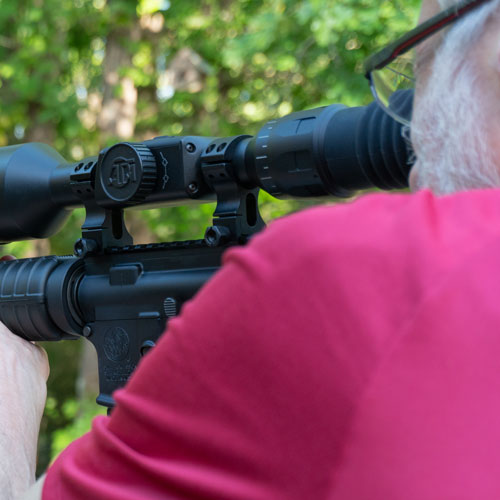
George has been an avid shooter for twenty years. He began shooting when he was gifted a Browning SA-22 for target practice. Now, as an academic, he combines his love of firearms and knowledge of history to write for firearms blogs and is still a frequent sight at the local range.
